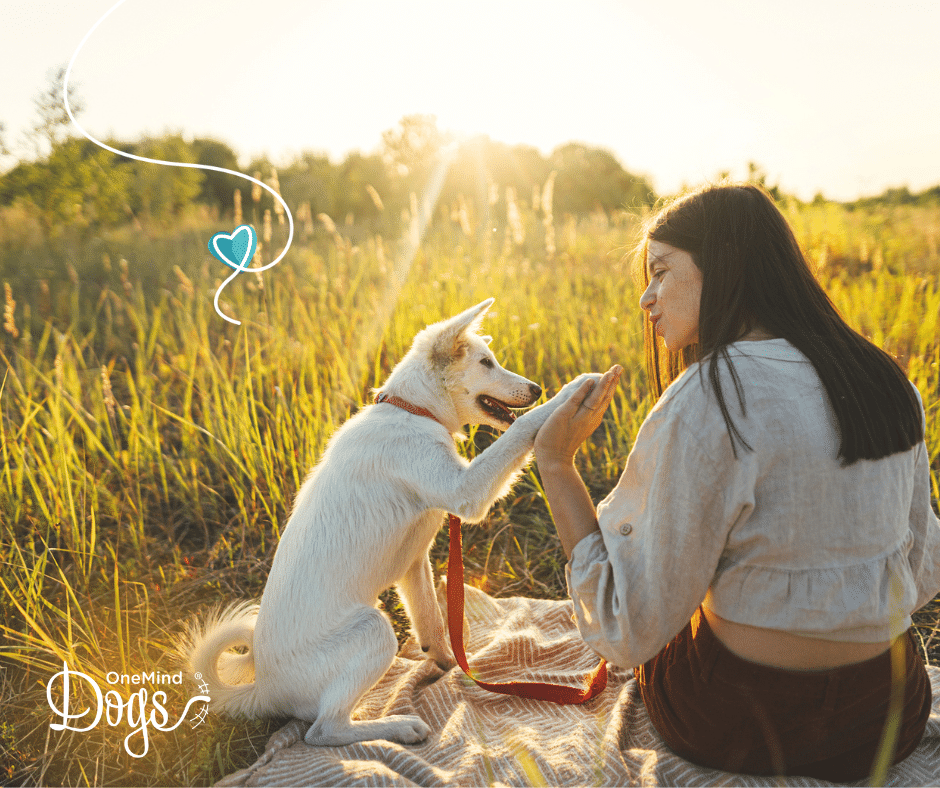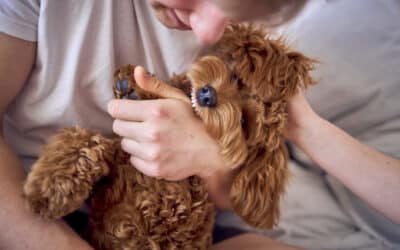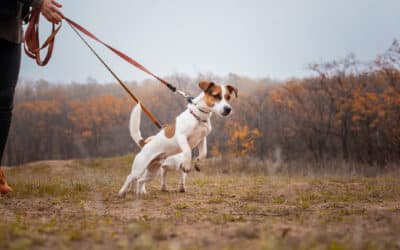To make life with your dog easy and enjoyable, they should know some basic dog training commands, or life skills. Does your dog get over excited, barking and jumping around before a walk, making it practically impossible to clip on their leash? Perhaps they put their paws up on every surface (including your kitchen counter) because they’re curious about what’s up there or they jump on your visitors.
In these situations, it’s easy to assume that your dog is being willfully disobedient or trying to cause problems. That’s not the case, though. They just need to learn the rules around living in a human-centred world.
Whether they’re a young puppy or just young at heart. Every dog is capable of learning new tricks and becoming the dog you always wanted.
In this article, we’ll share some basic training commands every dog should know. Whilst often referred to as commands or cues, these are just basic skills for everyday life. The words or commands don’t matter, how you teach them does.
Training effective commands to your dog starts with a strong bond
You might be tempted to dive straight into a strict training regimen, especially if your puppy or dog is a little too rambunctious. Remember, though, that teaching new skills is easier if you first have a healthy relationship with your dog. Punishment-based training may look like an easy solution sometimes. But the damage it causes to your relationship with your dog makes it not worth taking this controversial shortcut. Besides, it’s not much fun for you or your dog!
Positive reinforcement training is the key to a fun and connected relationship. Learning to train from the dog’s perspective is even better! When you use a training method your dog naturally understands, you’ve reached the holy grail to making dog training easy and enjoyable for everyone.
Here are some tips that can help you focus on creating a connection and becoming your dog’s bestie:
See things from your dog’s perspective
Put yourself in your dog’s shoes — or should we say paws?
You might feel frustrated that they’re not doing what you want them to do. However, they might also be feeling frustrated or confused because they don’t understand what you’re telling them. Lack of consistency and clarity are common causes of this situation.
Before you start barking commands (pun intended), ask yourself if your dog genuinely knows what you’re asking them to do.
If they haven’t learned a particular cue, there’s no point in repeating it over and over again. It’s like someone speaking to you in a language you don’t understand.
If you’re trying to teach your dog something and it’s just not working. Stop and think about their perspective, change something to make it easier for them to understand. Still need help? Contact our experienced coaches and get professional, easy-to-follow advice.
Prioritize play
Throughout your entire relationship with your dog, it’s important that you make time to play. Playing is how dogs learn and build trust, especially in the early days!
Playing with your dog frequently allows you to build a bond with them. It also encourages them to see you in a positive light. If your dog associates you with good things — like playtime — they’ll be more likely to listen and respond to cues in the future.
If you’re not good at playing (don’t worry, not all of us are), get some tips here.
Build a positive association with your dog’s name
A common misconception in dog training is that, once your dog “knows” their name, you don’t need to train it anymore. Building a positive association between your dog’s name and paying attention is a vital skill that should be rewarded for life. Think of your dog’s name as a cue for “pay attention”. The stronger you make that cue, the more freedom and trust you can give your dog later on. Even in a forest full of squirrels or a busy park.
As you’re playing with your dog, you have the perfect opportunity to build that association by practicing name recognition.
How do you practice name recognition?
Grab a handful of your dog’s favorite treats, then say the dog’s name in a happy, positive tone (only say it once). When your dog looks at you, say “yes” and run off, offering their treat. When they catch you, reward generously. You can easily do the same with their favorite toy too.
Repeat this exercise regularly and pretty soon, they’ll know that when you say their name, giving you their attention gets them something good. The more often you do this, the more reliable their name will be. Here’s an example:
Learn their likes and dislikes
Keep in mind that not all dogs are motivated by treats. Some prefer playtime as a reward, and others respond well to praise from their owner.
When you’re playing or spending time with your dog, try to figure out what they like and dislike the most.
Do they come running when you pull out the treat pouch? Do they lose their mind when you pick up a ball?
Basic dog training commands
After you’ve started building a bond by following the steps listed above, you can start incorporating some more structured training. Listed below are five essential skills that all dogs should learn:
1. Sit
This skill is like the “please” of the dog world. If they want attention, pats, or treats, it’s just good manners to sit first and wait patiently.
The main reason to teach this skill is to give your dog a behavior to default to that doesn’t involve muddy paws on your favorite shirt.
To teach your dog to sit, start with them standing in front of you. Hold a treat near their nose and move your hand in an arc over their head while you say “sit”.
Their bottom will naturally move toward the floor as they raise their head. As soon as your dog gets into a sitting position, say “yes” and give them the treat. Repeat until they automatically start sitting when you say “sit”.
2. Stay
This one’s all about self-control and teaching your dog to hold their ground regardless of distractions. Plus, it’s handy when you want to get the mail without being knocked down the steps by your enthusiastic puppy!
To teach the “stay” cue, start by asking your dog to sit. Hold your hand out in front of you and say, “Stay.” Wait one or two seconds, then say “yes” and give them a treat.
When they’re consistently staying for a second or two, you can gradually increase the amount of time they have to wait for their treat.
The next step is to add some movement, just a tiny step back at first and then say “yes” and step in towards the dog and reward. Your dog’s bottom should stay on the ground between the “yes” and the reward. If they start to stand up, don’t reward them. Ask for the sit and stay again and make it a bit easier for a few more turns (e.g. don’t wait too long to reward).
3. Come
Training your dog to come when he’s called ensures they learn to prioritize your call over any other temptation. This cue is very handy when a pesky bunny decides to dart across your path!
Start by getting an incentive — it could be treats, a favorite toy, etc. (this is why it’s important to learn your dog’s likes and dislikes!). Show the reward, whatever it is, to your dog.
Now, run a couple of paces away and call their name in a happy tone. When they come to you, say “yes” and give them the treat or let them play with the toy for a moment.
Join our recall challenge to get more great tips!
4. Heel
Learning to walk on a loose leash on cue makes walking enjoyable and ensures even your elderly grandma can walk your dog without fear of being dragged down the road.
The heel is traditionally done on the left-hand side, but you can pick whichever side works best for you and your dog.
Use a treat to lure them to your side as you say the word “heel,” and reward them when they’re standing directly next to you. When they’re doing this consistently, you can start walking forward, rewarding them for continuing to walk at your side.
Watch a webinar to learn more about this skill:
5. Watch/focus
Teaching your dog to look at you on command is very useful when distractions are around or when you need your dog to focus on you before giving a different cue.
Here’s a quick video on the process:
Need extra support?
You can make a lot of progress on your own by following the tips shared in this guide. If you and your dog need a little extra help, though, don’t hesitate to reach out or join our Puppy Training app for lots of great tips!




